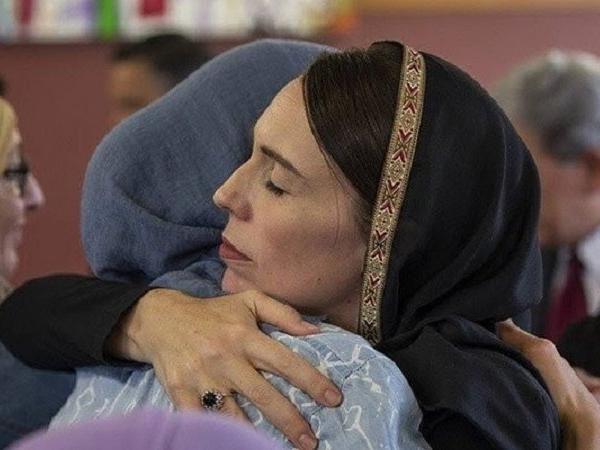Posted by Mariyam Raza Haider
29-year old Fatima*, a resident of Ghaziabad, Uttar Pradesh, is a middle-school teacher, who struggled to find a job for nearly six months, last year. Despite clearing all steps in the interview processes, two private schools in the city offered her position on the condition that she removes her hijab within the school premises.
This form of racism and Islamophobia against hijab-wearing women has been on the rise, not just in India but worldwide. Hence, the unanimous message of solidarity that the women of New Zealand, including their Prime Minister, Jacinda Ardern sent by donning
There has been
There has been a systemic othering of Muslim women who choose to cover their heads, in different parts of the world.
The hijab is and should be a personal prerogative of the woman wearing it. Turning a personal choice into a political one, ardently invites public scrutiny and non-appropriate views. It takes away the agency from Muslim women to find comfort and confidence in their life choices. The question that needs to be constantly highlighted thus is the autonomy of a woman to make a well-informed decision. Neither the state nor the religion should have the right to govern it.
Also read: The Christchurch Mosque ‘Shootings’: Why Are White People Never Called Terrorists?
In the same vein, it is crucial to highlight the case of Iranian human rights activist and lawyer, Nasrin Sotoudeh, who earlier this month was sentenced to 38 years in prison and 148 lashes, on charges of conspiring against national security. An outspoken advocate of personal liberties, Nasrin in 2018, defended women who removed their head scarves publicly during a movement termed ‘Girls of Enghalab Street’ while protesting against the mandatory hijab law in Iran. Along with Nasrin, countless Iranian women activists, over the past years, have been subjected to police harassment, legal intimidation, imprisonment and even exile, for raising their voices against the discriminatory law.
The hijab then becomes a tool for political manipulation and moral policing. When a personal choice is turned into a political one, the entity of the woman is objectified, erasing her background narrative. Her upbringing, her cultural and social set up, her manner of faith and practice, her comfort and above all, her voice, are blanketed under a singular identity.
We view hijabi women through a pre-conceived, judgemental notion, adding to the existing Islamophobic stereotypes. Non-hijabi women, on the other hand, are also judged for having attributes associated as ‘western’ within their communities. The point that begs to be highlighted in both these cases, is the need to accept a woman’s autonomy over her body. Hijab or no hijab has to solely be the woman’s prerogative, devoid of any duress.
I was raised in a Muslim family and have lived through my share of judgement from within the community on clothing choices. There is a clear expectation to dress modestly, to represent an ‘ideal Muslim’ woman in the larger diaspora. Growing up, while hijab was not an expectation, wearing short dresses was not acceptable either. In later years, my Muslim identity has been questioned for not wearing a hijab too. “You’re a Muslim? Don’t look like one”, has been a characteristic remark that I’ve heard on several occasions from European friends. At the same time, there has also seen a surge of Muslim girls as young as two years old being made to wear hijabs. All these examples are emblematic of patriarchy’s stronghold in dictating upon women’s choices and myopic representations of Muslim women.
When a personal choice is turned into a political one, the entity of the woman is objectified, erasing her background narrative.
There is a conditioning of how a Muslim woman should or should not be. Her physical appearance, her social behaviour, career and personal choices, are subjected to societal scrutiny, which then leads to self-censorship. In a recent piece on India’s Muslim middle class, the case of corporate lawyer Bushra Shad and her dilemma with wanting to wear the hijab at the age of 30, primarily stemmed from the prejudice and narrow-mindedness that people carry around hijabi women. Often imposing a form of dual identity that one lives with in order to not get caught in cultural and religious cross hairs.
Freedom from coercion is what feminism stands for. A woman can actively choose to wear or not to wear the hijab. Commentators should understand that every Muslim woman’s experience can be different, and reacting to her choice of attire sans context, is ignorant
Being a Muslim woman is not a monolith. A fact that is now more than ever being represented by Muslim women internationally including, current US Congresswomen Ilhan Omar and Rashida Tlaib, who represent a pluralistic approach while following the same faith. In times of rising right-wing nationalism and intolerance towards minorities, it has become more important, to educate ourselves, go deeper into contexts, nurture syncretic environments and respect diversity in every aspect.
Also read:When Faith Collides With Career: Why UGC-NET Banning Hijab Is Arbitrary
Intersectional feminism allows room for all, a space for everyone’s stories and experiences. One might not agree with another’s choice, but that is no reason for discrimination. In the words of feminist poet Audrey Lorde, “It is not our differences that divide us. It is our inability to recognise, accept, and celebrate those differences.”
*Name changed to protect identity.
Mariyam Haider is an independent researcher and writer based in South Asia. Her work focuses on the intersectionality of civil rights, feminism, and international political discourse.
Featured Image Source: Times Now
About the author(s)
Guest Writers are writers who occasionally write on FII.




